
Exclusive Safaris, Encounters, and Lodges in Africa Beyond the Big Five
Lions, leopards, elephants, rhinos, and buffalos: The Big Five are forever enshrined in the vision of an African safari. But the rare, secretive, and lesser-known creatures, from pangolins to servals to mountain gorillas, are assuming the safari spotlight, and the classic Out of Africa fairy tale is changing. From the sand dunes of the Kalahari to the cloud forests of Rwanda, select ultra-luxury lodges are honing in on such species-specific encounters and proving that Africa’s wild riches span far and wide.

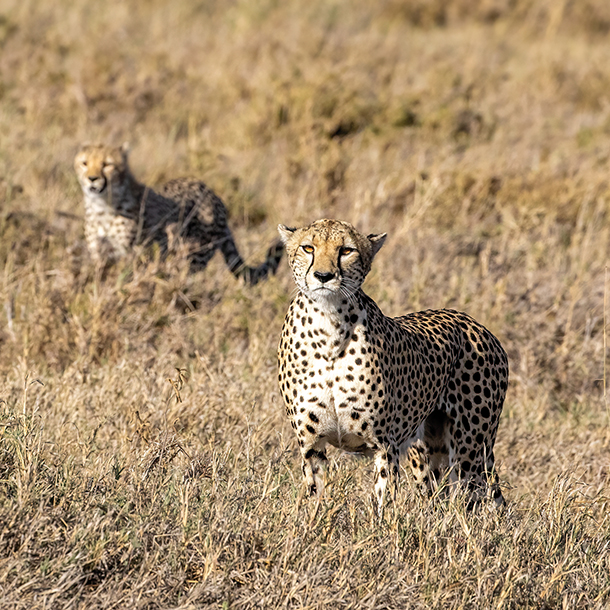
ASILIA NAMIRI PLAINS, TANZANIA: CHEETAH COUNTRY
In 1994 much of the short grass plains of Tanzania’s eastern Serengeti National Park were designated off-limits, as part of The Serengeti Cheetah Project through the Wildlife Conservation Society. The goal: Reverse an alarming decline in the number of cheetahs in the Serengeti and foster the return of a sustainable population. Twenty years and more than 100 cheetahs later, the project was deemed successful, and the land was reintegrated into Serengeti National Park. Soon after, eco-conscious operator Asilia Africa planted roots with a tented camp in the heart of Tanzania’s cheetah country, which also happens to be the top locale to encounter—and even photograph—Africa’s other secretive cats.
Natural Attractions Twice-daily journeys into surrounding grasslands highlight cat-spotting smaller felines like caracals, African wildcats, and servals. Why? Namiri Plains happens to be one of the few places on Earth where these nocturnal creatures can be encountered regularly during daylight hours. Of course, there are also the beautiful cheetahs—and lots of them. It’s not uncommon to spend an entire morning following a hunt, start to finish. (But be warned: This experience is not for the faint-hearted.)
Creature Comforts Transformed in 2019, Namiri Plains is now one of the Serengeti’s premier tented camps. This collection of 10 permanent, solar-powered tents were hewn from ancient sedimentary rock and theatrically draped in canvas. Each features a dreamy outdoor sala and bathtub that overlooks the Ngare Nanyuki riverbed, frequented by elephants. From $972/person/night, all-inclusive; asiliaafrica.com
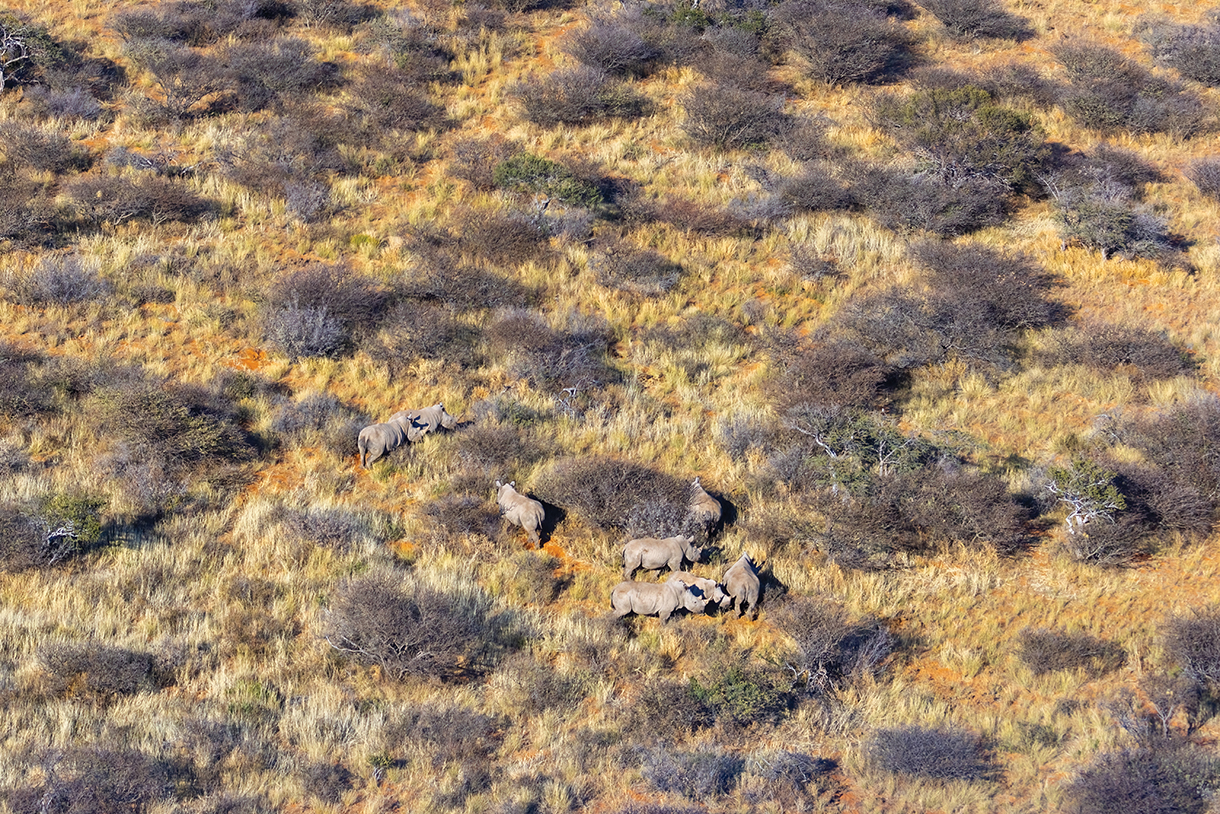
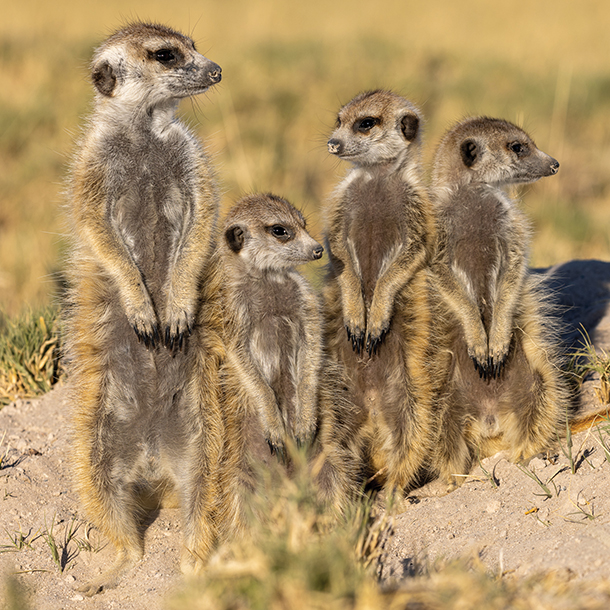

TSWALU, SOUTH AFRICA: THE HOLY GRAIL OF RARE WILDLIFE SIGHTINGS
South Africa’s largest privately owned reserve is the highlight of the green Kalahari, an ethereal semi-arid expanse where lush plant life peppers—and at times blankets—the red-clay earth and surrounding sand dunes. Measuring an impressive 463 square miles (larger than the entirety of Colorado’s Rocky Mountain National Park), Tswalu takes a low-impact, high-value approach to ecotourism with two boutique camps, The Motse and Tarkuni. At any given time, there are no more than 28 guests combing the vast, magnificent landscapes in search of southern Africa’s most mysterious residents.
Natural Attractions Though present year-round, elusive desert species like aardvark, aardwolf, and pangolin make cameos aplenty during the brisk evenings of winter, June through August. Shadow Tswalu’s all-star team of researchers and ecologists as they lead groundbreaking studies into the secret lives of Kalahari’s icons. In any season, embark on walking safaris to meet myriad populations of meerkats, up-close and personal. Travel by Land Rover to cross paths with roan antelopes and bat-eared foxes while keeping an eye out for massive black-maned lions, camouflaged cheetahs, or shaggy brown hyenas lurking in the thicket. For the ultimate bird’s-eye views of the green-speckled desert landscapes—plus a bit of rhino spotting—opt for a helicopter that reaches the far corners of the reserve.
Creature Comforts At The Motse, cozy up in one of nine legae (Tswana for “home”), each underscored by an expansive sala overlooking the rust-hued terrain. Families or larger groups can stay at the five-bedroom private homestead, Tarkuni, for an even more bespoke experience. While every home-cooked meal at Tswalu is excellent, a multi-sensory dinner at Restaurant Klein Jan is one of Earth’s most memorable, and exclusive to Tswalu guests. South African, Michelin-star chef Jan Hendrik van der Westhuizen weaves storytelling into a multicourse meal of heritage Northern Cape cuisine. Dinner begins in the living room of a 100-year-old farmhouse and moves to a subterranean root cellar, before transitioning into a more modernist, open-kitchen setting. From $2,027/person/night, all-inclusive; tswalu.com
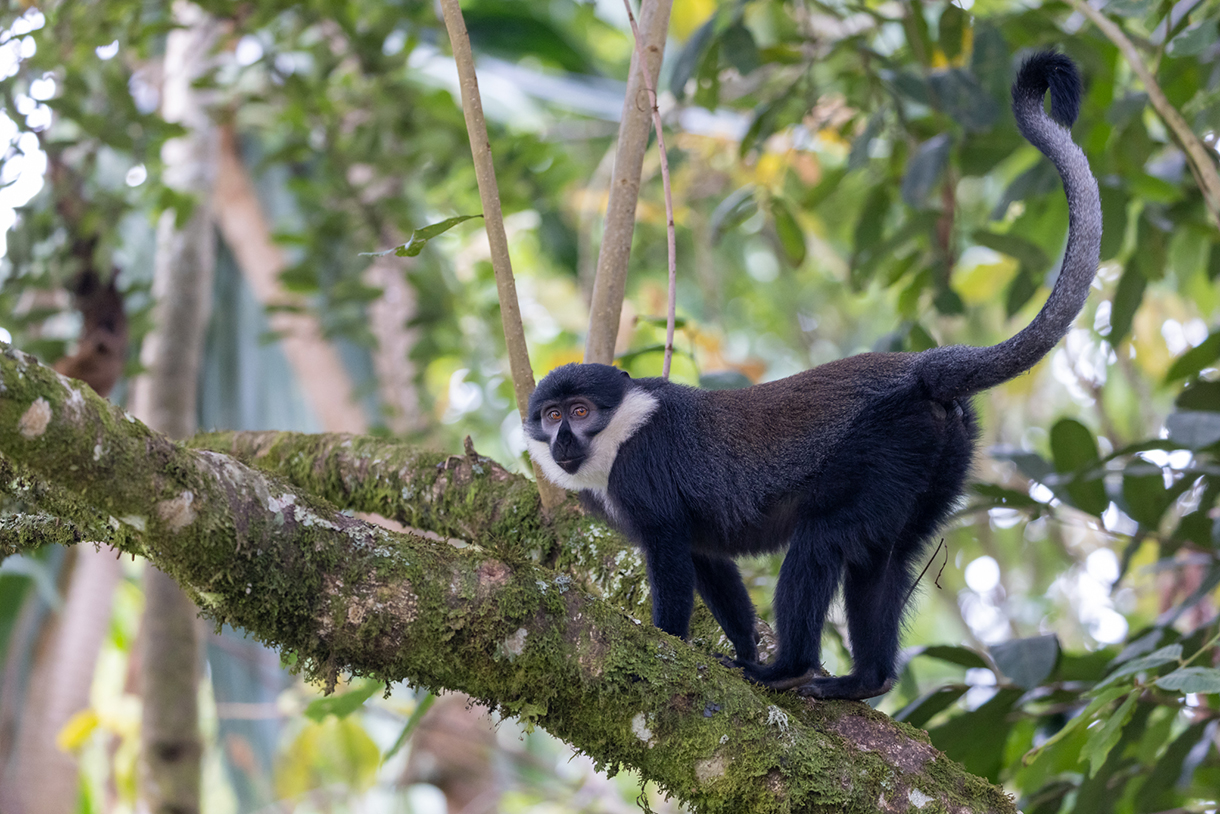
ONE&ONLY NYUNGWE HOUSE, RWANDA: A PRIMATE- AND BIRD-WATCHER’S PARADISE
In unspoiled western Rwanda, One&Only Nyungwe House gives intrepid travelers the rare opportunity to explore Central Africa’s most enchanted forest—and in high style. The exquisite 22 rooms are set within a working tea plantation at the edge of Nyungwe National Forest, encircled by mist-shrouded mountains home to 13 species of primates, most notably chimpanzees, and 300 species of birds.
Natural Attractions In this far-flung cloud forest, the quest to find and photograph primates is top priority, beginning with the most challenging: chimpanzees. Visitors rise by 4 a.m. to venture deep into the near-impenetrable forest in hopes of encountering a community feeding high in the trees at sunrise. Unlike habituated gorilla troops, chimpanzees are skittish, erratic, and sometimes intimidating (read: prepare to work hard and sweat for your sighting). More easily seen are the Angolan black-and-white colobus monkeys, including the largest troop in the world at more than 500 individuals. Around the lodge, encounter gorgeous L’Hoest’s monkeys or pop into the National Forest proper where blue monkeys abound, as do red-tailed monkeys and grey-cheeked mangabeys. The bird-watching near the lodge is also tops. Keep an eye out for the black-and-white-casqued hornbills that frequent the area, and team up with the lodge’s resident birdwatcher to observe some of the area’s 27 endemics, including the red-collared mountain babbler and the breathtaking Rwenzori turaco.
Creature Comforts Stilted guest rooms and suites nearly reach the forest canopy, making it easy to admire wildlife from the comfort of your cozy outdoor living room. In both suites and common areas, interiors skew distinctly Rwandan, underscored by displays of traditional basket work, galleries of Rwandese geometric art, and other distinguishing ornaments. Meals are served in the lodge’s restaurant at night, but by day, they are enjoyed in swoon-worthy setups within the towering forests and undulating tea hedges. An infinity pool and spa complex integrate elements of wellness into the greater Nyungwe experience. From $2,100/night/room, all-inclusive; oneandonlyresorts.com
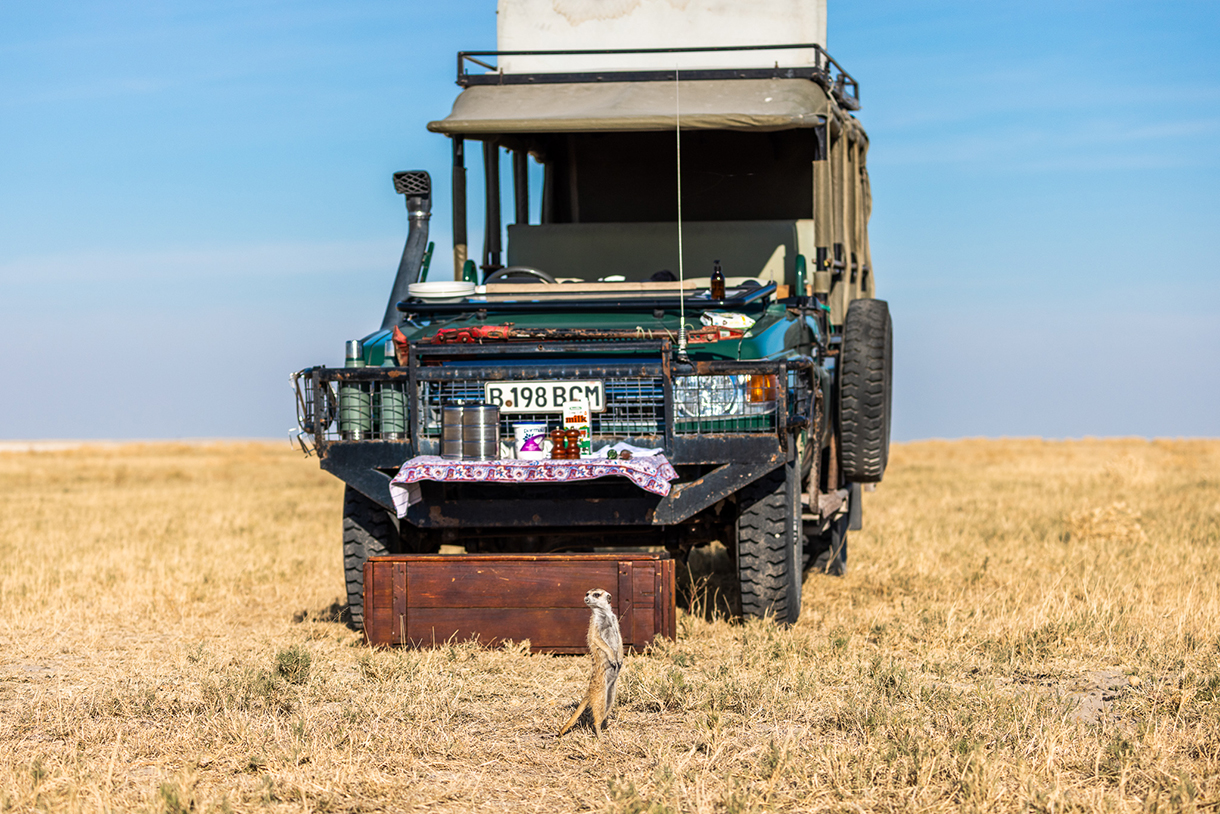
JACK’S CAMP, BOTSWANA: A VERITABLE MEERKAT MANOR
Back in the 1960s, voyager Jack Bousfield pioneered safaris in the salt pans surrounding Makgadikgadi Pans National Park in remote, southern Botswana. Fast forward to present day, as his son, Ralph, honors his father’s legacy through Jack’s Camp, famed for its distinctive big-top design, campaign-style furnishings, on-site natural history museum, and access to Earth’s most charismatic colonies of meerkats.
Natural Attractions Seasonal flooding transforms this otherwise barren swathe of the Kalahari into an artistic patchwork of pinks and black-and-white stripes as lesser flamingos flock to the mineral-rich salt pans and Burchell’s zebra migrate en masse to source fresh grass. However, the principal draw to Jack’s remains a chance to see native, desert-adapted residents such as honey badgers and spring hares (aka African kangaroos), and, of course, meerkats up close. Timing is everything for interacting with meerkats face-to-face. Under the direction of your safari guide and one of Jack’s meerkat specialists, you’ll settle near a den before sunrise. When the meerkats awake, they’ll exit, cautiously approaching with curiosity. They’ll start chattering in their special language, and one may even climb on your head to scout for possible predators. Don’t be surprised if the entire colony soon decides to pile up on you. It’s Meerkat Manor unfolding in real time! Note that while such encounters can never be guaranteed, request a visit with the celebrity BBC colony for your best chances. This is the very group that’s appeared on countless documentaries and television shows and allowed the world to fall madly in love with meerkat society.
Creature Comforts Fresh off a 2021 refurbishment, Jack’s Camp features nine oversized tented suites, draped in bold, textured ensembles of reds and greens, intentionally evoking a safari style of yore. A pool pavilion overlooks the palm-studded desert while a main tent houses an entire natural history museum, rife with cabinets of curiosities and taxidermy. From $1,450/person/night, all-inclusive; naturalselection.travel
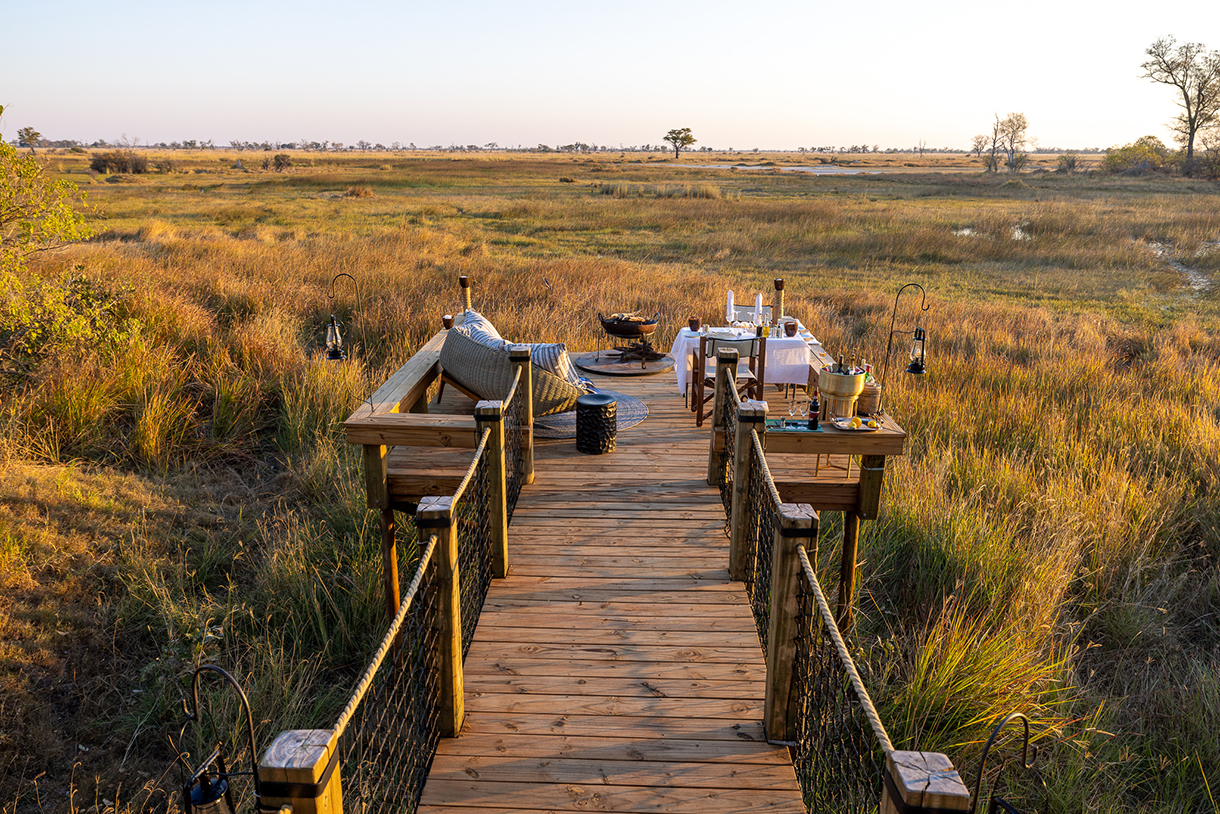
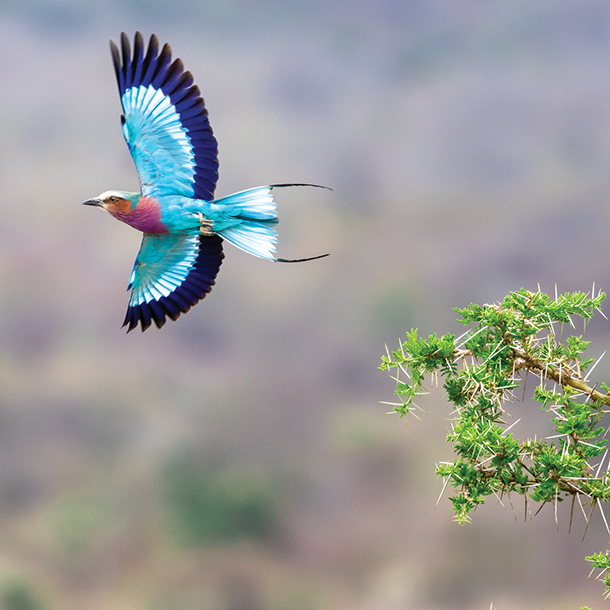

TULUDI CAMP, BOTSWANA: A HIGHLY PERSONALIZED SAFARI EXPERIENCE
In summer 2019, conservation-led outfit Natural Selection debuted their most intimate camp yet, set in the 494,000-acre Khwai Private Reserve of the northern Okavango Delta, an area famed for prolific avifauna and robust populations of the endangered African painted dog and leopard. With just seven tented treehouse suites, endless wide, open spaces, and a maximum of three vehicles per sighting, Tuludi delivers a highly personalized safari experience, including days in which you may never encounter another guest outside of camp.
Natural Attractions The mopane woodlands and floodplain grasslands teem with colorful and eclectic birdlife that wows even “non-birder” types. Ogle saddle-billed storks as they preen, watch lilac-breasted rollers light up the sky like fireworks, scour the reeds for lesser jacanas, and prepare for a physics-defying takeoff by a colossal marabou stork (affectionately called the Boeing 747 of the safari world). Guides will push Land Rovers to the max through the marshes, following herds of red lechwe and sitatunga while waiting for the cries and calls of African painted dogs (also known as African hunting dogs or wild dogs). Follow the high-pitched sounds to reach a frenzied pack, sometimes up to 21 strong, in the process of plotting out their next hunt. Helicopter rides reveal the untouched nature as far as the eye can see—and countless stocky elephants playing and parading in the floodplains.
Creature Comforts Tuludi’s treehouses encompass elevated tented suites handsomely appointed and illuminated by soft goods in bright, African prints. An outdoor bathtub and shower complement an al fresco leisure platform, including a swing chair, daybed, and plunge pool. Design-forward, multi-tiered common areas are built in and around the landscape, intersected by centuries-old trees and connected by wooden platforms and swing bridges. Service is top-notch, as are the hearty cuisine and caliber of field guides. On longer stays, opt for a night under the stars in the new, open-air sky bed suite. Following sundowners and a multicourse dinner, admire the twinkling night sky and then retreat behind the bed’s mesh draping, falling asleep to the nocturnal calls of the wild. From $915/person/night, all-inclusive; naturalselection.travel




